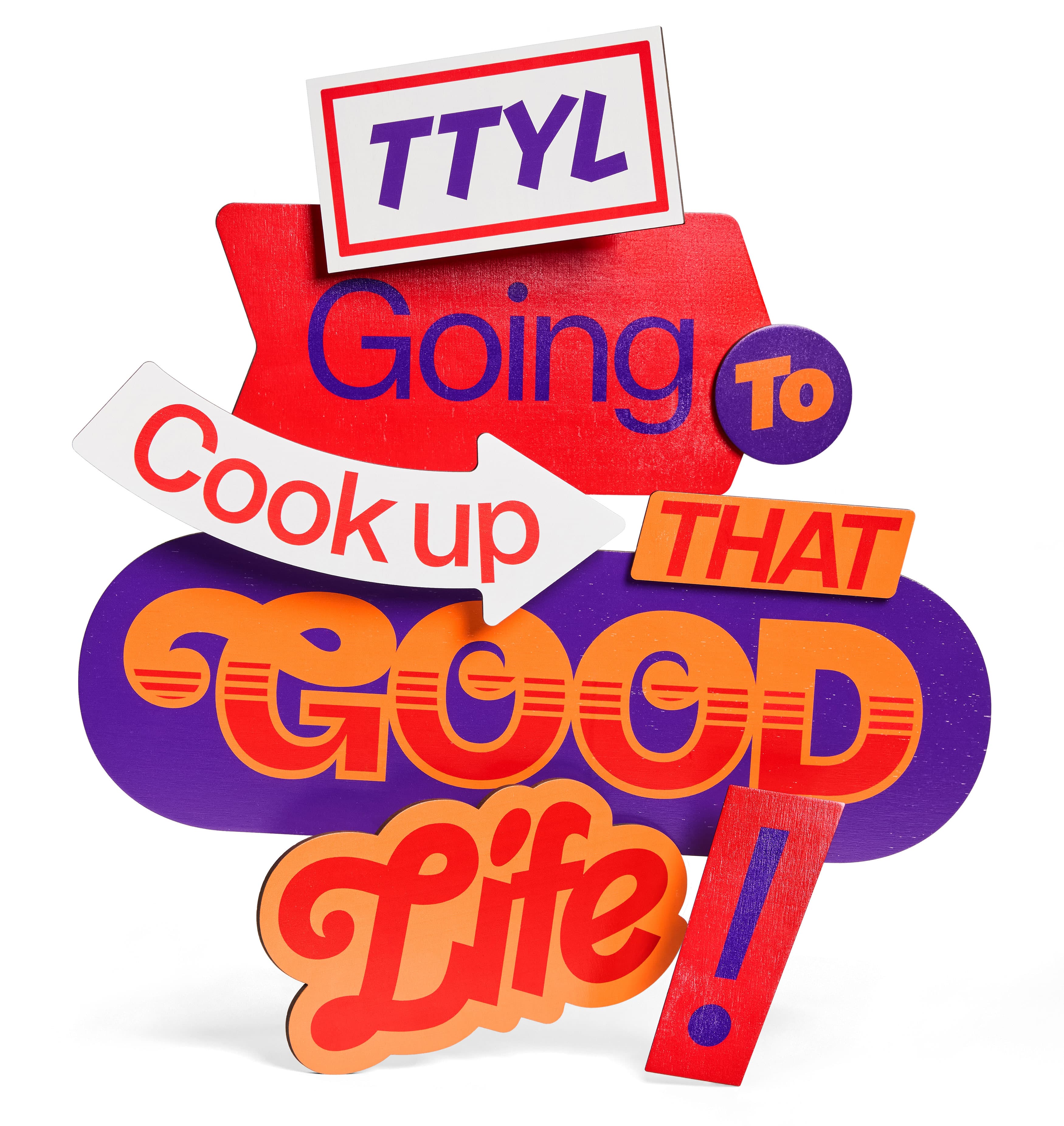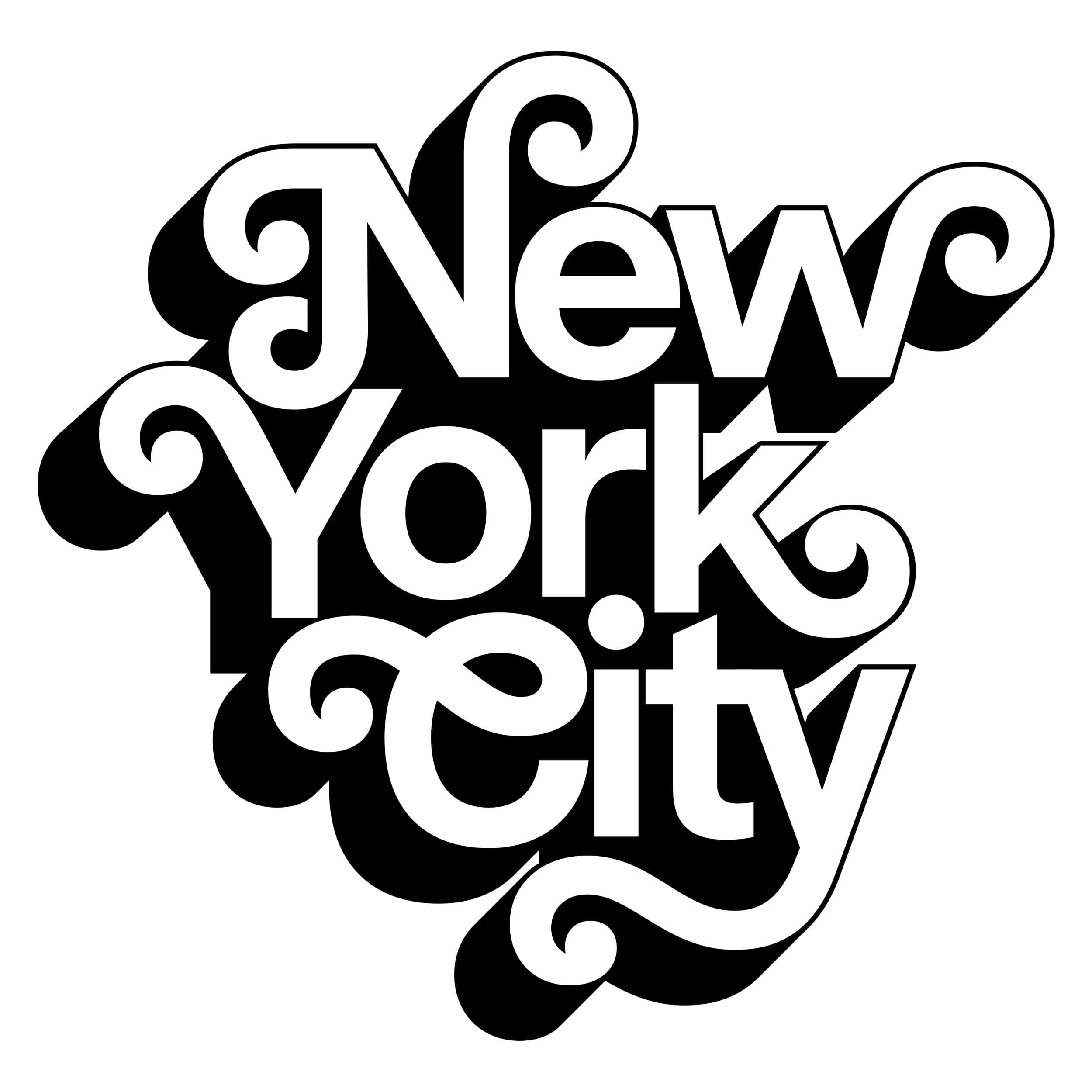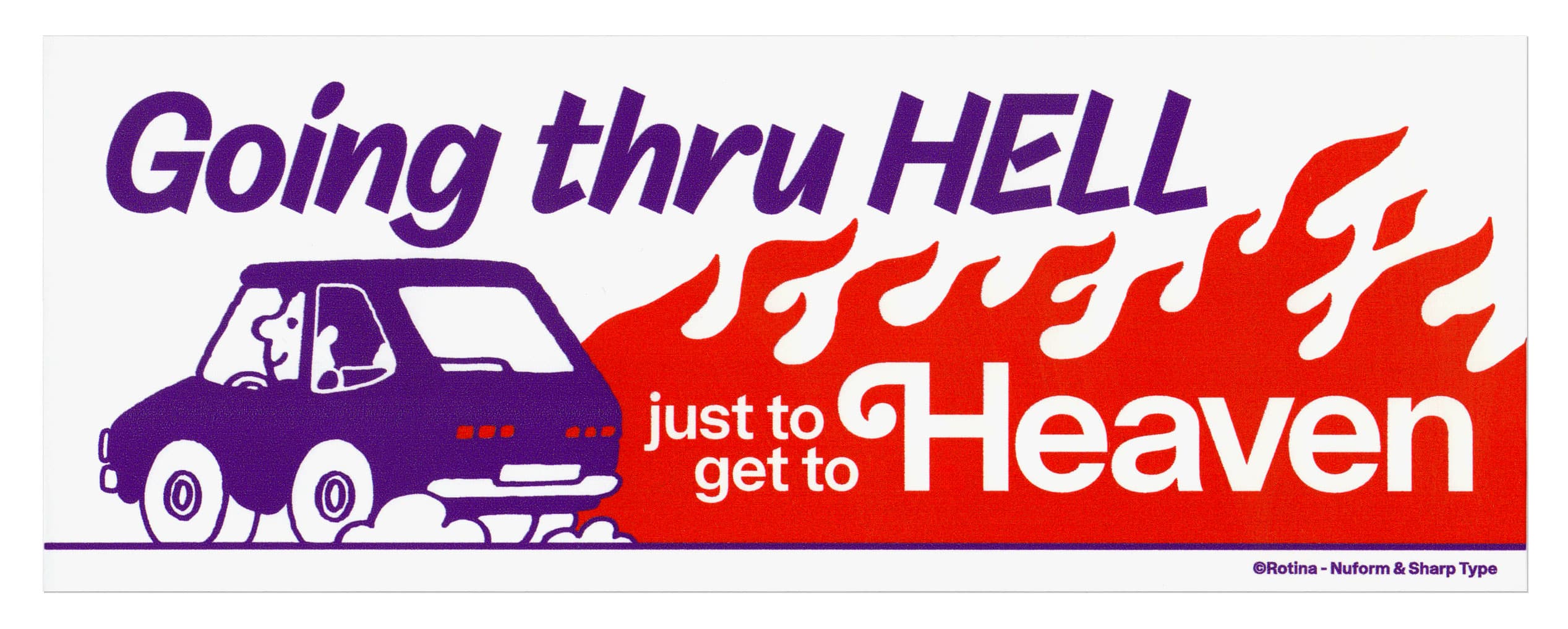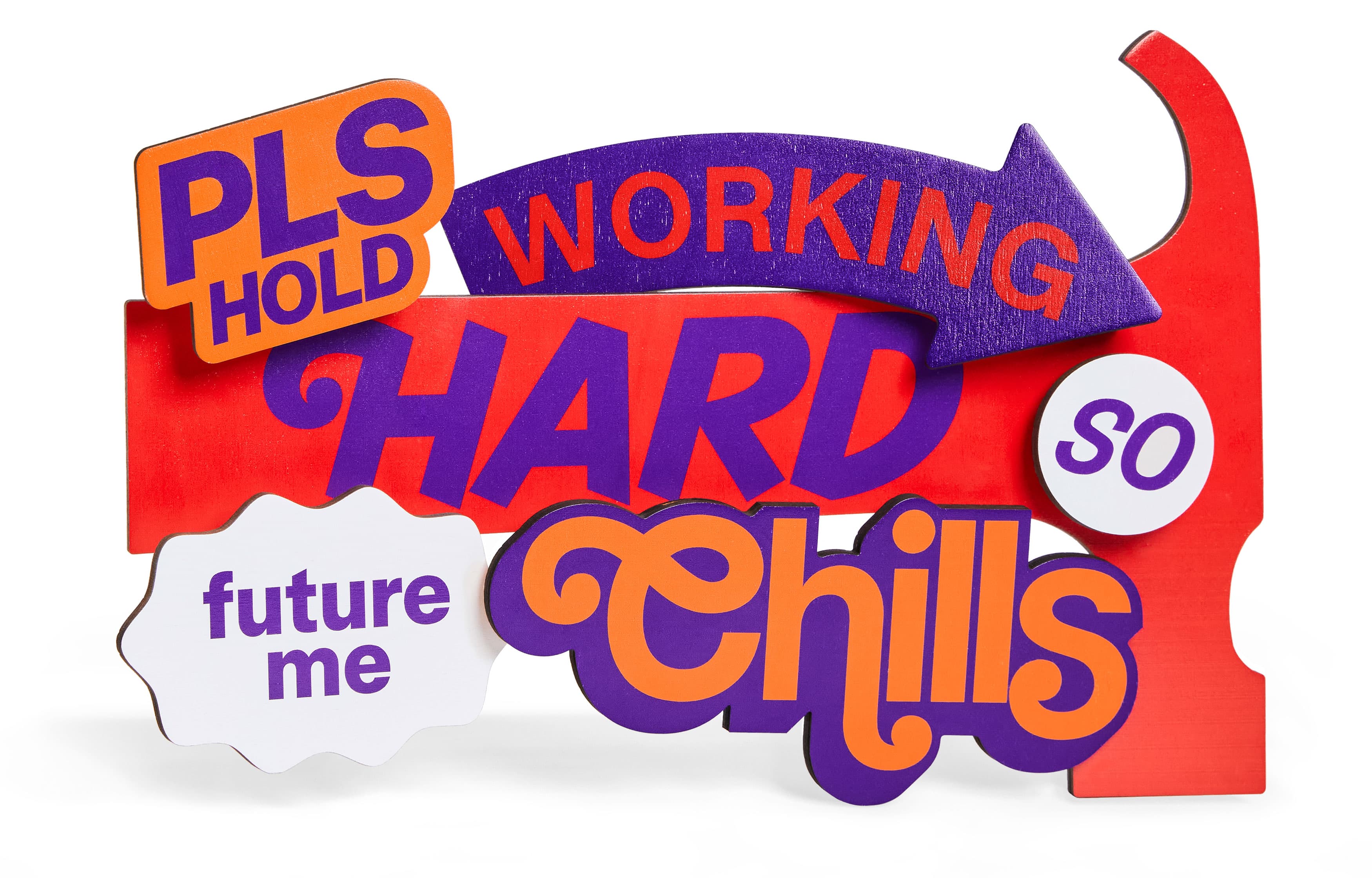Rotina
Every letter in Rotina carries a quiet tension: part modernist engineering, part human gesture. The Roman and Italic styles provide a clean, functional base for branding, editorial, and digital applications. But with a single click, the extensive OpenType features and complimentary styles deliver instant personality. This duality is Rotina’s greatest asset and its conceptual engine. It’s a type system that can shift from a swiss poster to a handwritten note without losing its composure, designed for both clarity and charm. What begins as a study in restraint becomes a lesson in freedom–a workhorse with a wink. Rotina is built for the everyday, but always ready to break the routine.


New York, often called New York City is the most populous city in the United States. It is located at the southern tip of New York State on one of the world’s largest natural harbors.
Beginning in the mid- 19th century, waves of new immigrants arrived from Europe drama-tically changing the composition of the city and serving as workers in the expanding industries. Modern New York traces its development to the consolidation of the five boroughs in 1898
The economy in the 1700s was based on farming, local production, fur trading, and Atlantic jobs like shipbuilding. In the 1700s, New York was sometimes referred to as a breadbasket colony, because one of its major crops was wheat. New York colony also exported other goods included iron ore as a raw material and as manufactured goods such as tools, plows, nails and kitchen items such as kettles, pans and pots.
An economic and building boom following the Great Depression and World War II. Throughout its history, New York has served as a main port of entry for many immigrants, and its cultural and economic influence has made it one of the most important urban areas in the United States and the world.
On July 24, the City Council voted to give the Garden a 10-year operating permit by a vote of 47–1. This is the first step in finding a new home for Madison Square Garden and building a new Penn Station that is as great as New York and suitable for the 21st century, said City Council speaker Christine Quinn.
In April 1986, Gulf and Western announced that they would build a new Madison Square Garden a few blocks away on the site of present-day Hudson Yards. The plan would cost an estimated $150 million and included the demolition of the 1964 building to replace it with a new office tower development.
Fenway Park has hosted the World Series eleven times, with the Red Sox winning six of them and the Boston Braves winning one. Besides baseball games, it has also been the site of many other sporting and cultural events including professional football games for the Boston Redskins, Boston Yanks, and the Boston Patriots; concerts; soccer and hockey games (including the NHL Winter Classic in both 2010 and 2023); and political and religious campaigns.
In 1911, while the Red Sox were still playing on Huntington Avenue Grounds, owner John I. Taylor purchased the land bordered by Brookline Avenue, Jersey Street, Van Ness Street and Lansdowne Street and developed it into a larger baseball stadium known as Fenway Park. Taylor claimed the name Fenway Park came from its location in the Fenway neighborhood of Boston, which was partially created late in the nineteenth century by filling in marshland or "fens", to create the Back Bay Fens urban park. However, given that Taylor's family also owned the Fenway Realty Company, the promotional value of the naming at the time has been cited as well.

RRRRRRRR
It was not until the late 1960s when Red Holzman became the head coach that the Knicks began to regain their former dominance. Holzman successfully guided the Knicks to two NBA championships
In 1970 and 1973. The Knicks of the 1980s had mixed success that included six playoff appearances; however, they failed to participate in the NBA Finals.
When coach Mike Davis succeeded Bob Knight, he suggested adding names to the jerseys. However, the Hoosiers' minimal look had become such a part of the program's brand that the proposal was dropped after considerable backlash from fans. Despite the long tradition behind the jerseys, they have undergone some slight changes over the years. The school's colors are cream and crimson, but in the 1970s Knight and football coach Lee Corso started using uniforms that were more scarlet or bright red.
The team is widely noted for its simple game jerseys. Unlike most schools, Indiana does not have players' names on the back of jerseys that players wear on the court. The notion behind the nameless jerseys is that players play for the team name on the front, not the individual's name on the back. In June 2013, the New York City Council Committee on Land Use voted unanimously to give the Garden a ten-year permit, at the end of which period the owners would either have to relocate or go back through the permission process.
RRRRRRRR
The playoff-level Knicks of the 1990s were led by future Hall of Fame center Patrick Ewing; this era was marked by passionate rivalries with the Chicago Bulls, Indiana Pacers, and Miami Heat.
Ewing learned to play basketball at Cambridge Rindge and Latin School with the help of John Fountain and his coach Mike Jarvis. With only a few years of playing experience, Ewing developed into one of the best high school players in the country
Madison Square Garden, colloquially known as the Garden or by its initials MSG, is a multipurpose indoor arena in New York City. It is located in Midtown Manhattan between Seventh and Eighth avenues from 31st to 33rd streets above Pennsylvania Station. It is the fourth venue to bear the name “Madison Square Garden”; the first two, opened in 1879 and 1890, were located on Madison Square, on East 26th Street and Madison Avenue, with the third Madison Square Garden
In May 2013, four architecture firms – SHoP Architects, SOM, H3 Hardy Collaboration Architecture, and Diller Scofidio + Renfro – submitted proposals for a new Penn Station. SHoP Architects recommended moving Madison Square Garden to the Morgan Postal Facility a few blocks southwest, as well as removing 2 Penn Plaza and redeveloping other towers, and an extension of the High Line to Penn Station.
1
4
aaaaaaaa
I
Michael Jordan entered the league in 1984 with the Chicago Bulls, spurring more interest in the league. In 1988 and 1989, four cities got their wishes as the Charlotte Hornets, Miami Heat, Orlando Magic, and Minnesota Timberwolves made their NBA debuts, bringing the total to 27 teams.
The Detroit Pistons won back-to-back NBA championships in 1989 and 1990, led by coach Chuck Daly and guard Isiah Thomas. Jordan and Scottie Pippen led the Bulls to two three-peats in eight years during the 1991–1998 seasons.
Isiah Lord Thomas III is the son of Isiah Thomas II and Mary Thomas. The youngest of 9 children, Thomas was born on April 30, 1961, in Chicago, Illinois, and grew up in the city's West Side. He started playing basketball at age three and would dribble and shoot baskets as the halftime entertainment at Catholic Youth Organization games.
Following his playing career, Thomas was an executive with the Toronto Raptors, a television commentator, the owner of the Continental Basketball Association, the head coach of the Indiana Pacers, and an executive and head coach for the New York Knicks. He later served as men's basketball coach for the Florida International University Golden Panthers for three seasons from 2009 to 2012. Thomas was a president and part owner of the Knicks' WNBA sister team, the New York Liberty, from 2015 to 2019.

The franchises added were the San Antonio Spurs, Denver Nuggets, Indiana Pacers, and New York Nets now the Brooklyn Nets. Some of the biggest stars of this era were Abdul-Jabbar, Barry, Dave Cowens, Erving, Elvin Hayes, Walt Frazier, Moses Malone, Artis Gilmore, George Gervin, Dan Issel, and Pete Maravich. The end of the decade, however, saw declining television ratings, low attendance and drug-related player issues
Following the 1976 season, the leagues reached a settlement that provided for the addition of four ABA franchises to the NBA, raising the number of franchises in the league at that time to 22. The franchises added were the San Antonio Spurs, Denver Nuggets, Indiana Pacers, and New York Nets (now the Brooklyn Nets).
In 1969, Alan Siegel, who oversaw the design of Jerry Dior's Major League Baseball logo a year prior, created the modern NBA logo inspired by the MLB's. It incorporates the silhouette of Jerry West, based on a photo by Wen Roberts. The NBA would not confirm that a particular player was used because, according to Siegel, "They want to institutionalize it rather than individualize it. It's become such a ubiquitous, classic symbol and focal point of their identity and their licensing program that they don't necessarily want to identify it with one player." The logo debuted in 1971 (with a small change to the typeface on the NBA wordmark in 2017) and would remain a fixture of the NBA brand.
The ABA succeeded in signing a number of major stars in the 1970s, including Julius Erving of the Virginia Squires, in part because it allowed teams to sign college undergraduates. The NBA expanded rapidly during this period. From 1966 to 1974, the NBA grew from nine franchises to 18. In 1970, the Portland Trail Blazers, Cleveland Cavaliers, and Buffalo Braves (now the Los Angeles Clippers) all made their debuts expanding the league to 17. The New Orleans Jazz (now in Utah) came aboard in 1974 bringing the total to 18.

Through this period, the NBA continued to evolve with the shift of the Lakers to Los Angeles, the Philadelphia Warriors to San Francisco, the Syracuse Nationals to Philadelphia to become the Philadelphia 76ers
In 1967, the league faced a new external threat with the formation of the American Basketball Association (ABA). The leagues engaged in a bidding war. The NBA landed the most important college star of the era, Kareem Abdul-Jabbar (then known as Lew Alcindor), who went on to become the league's best player of the 1970s.
In 1957, rookie center Bill Russell joined the Boston Celtics, which already featured guard Bob Cousy and coach Red Auerbach, and went on to lead the franchise to eleven NBA titles in thirteen seasons. Center Wilt Chamberlain entered the league with the Warriors in 1959 and became a dominant individual star of the 1960s. The NBA landed the most important college star of the era, Kareem Abdul-Jabbar (then known as Lew Alcindor), who went on to become the league's best player of the 1970s.
The 1960s were dominated by the Celtics. Led by Russell, Cousy, and Auerbach, Boston won eight straight in the NBA from 1959 to 1966. This streak is the longest in the history of American professional sports. They did not win the title in 1966–67, but regained it in the 1967–68 season and repeated in 1969. The domination totaled nine of the ten championship banners of the 1960s.

The Knickerbockers, shortened and more commonly referred to as the New York Knicks, are an American professional basketball team based in the New York City borough of Manhattan.
The Kansas City Athletics were a Major League Baseball team that played in Kansas City, Missouri from 1955 to 1967, having previously played in Philadelphia, Pennsylvania as the Philadelphia Athletics. After moving to Oakland, California in 1967
At the end of the 1900 baseball season, the Western League was positioned by its president, Ban Johnson, as a new major league that would compete with the established National League. At the end of the 1900 baseball season, the Western League was positioned by its president, Ban Johnson, as a new major league that would compete with the established National League.
There were eight charter teams in 1901, the league's first year as a major league, and the next year the original Milwaukee Brewers not to be confused with the current Milwaukee Brewers moved to St. Louis to become the St. Louis Browns, and the year after the New York Highlanders replaced the disbanded original Baltimore Orioles. At the end of the 1900 baseball season, the Western League was positioned by its president, Ban Johnson, as a new major league that would compete with the established National League. At the end of the 1900 baseball season, the Western League was positioned by its president, Ban Johnson, as a new major league that would compete with the established National League

C
N